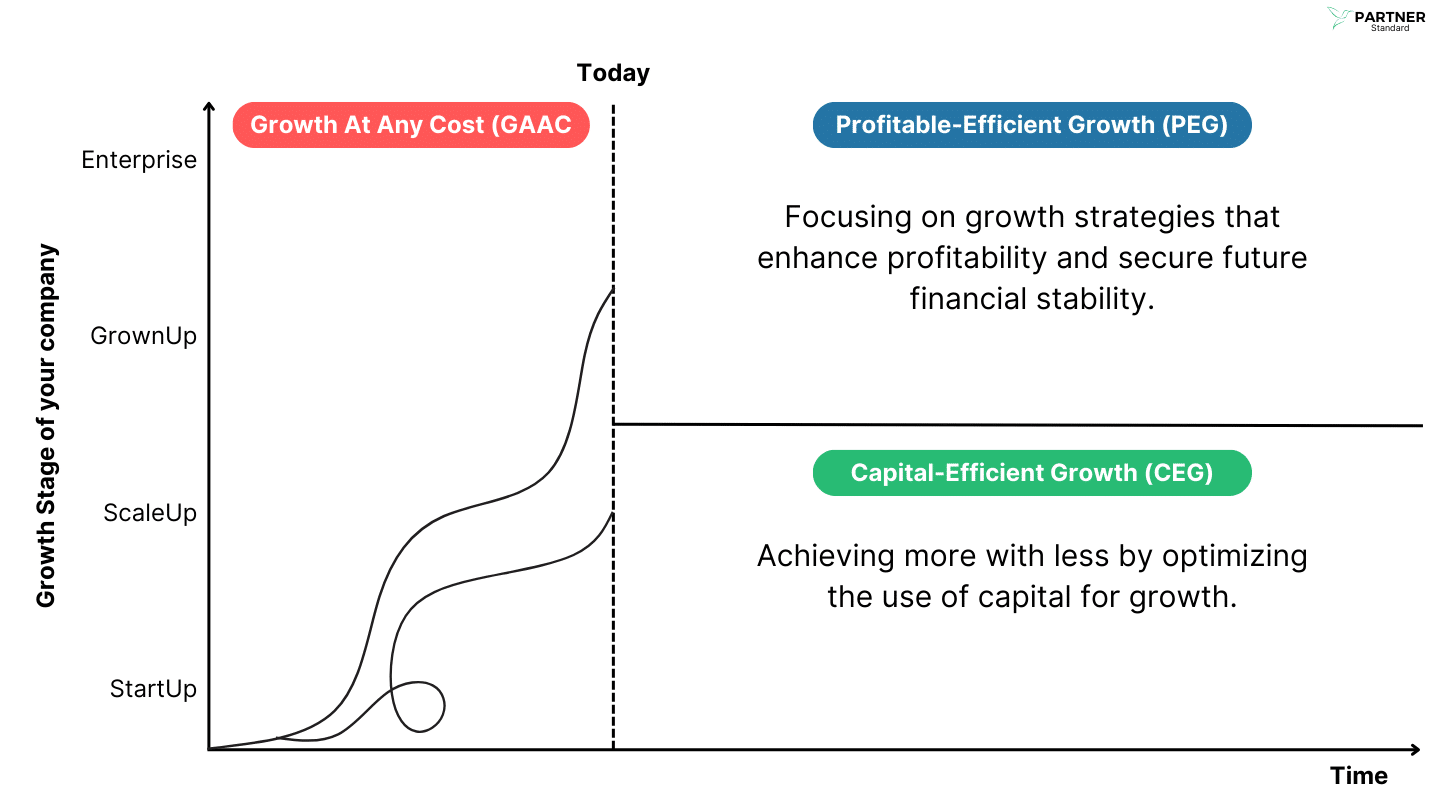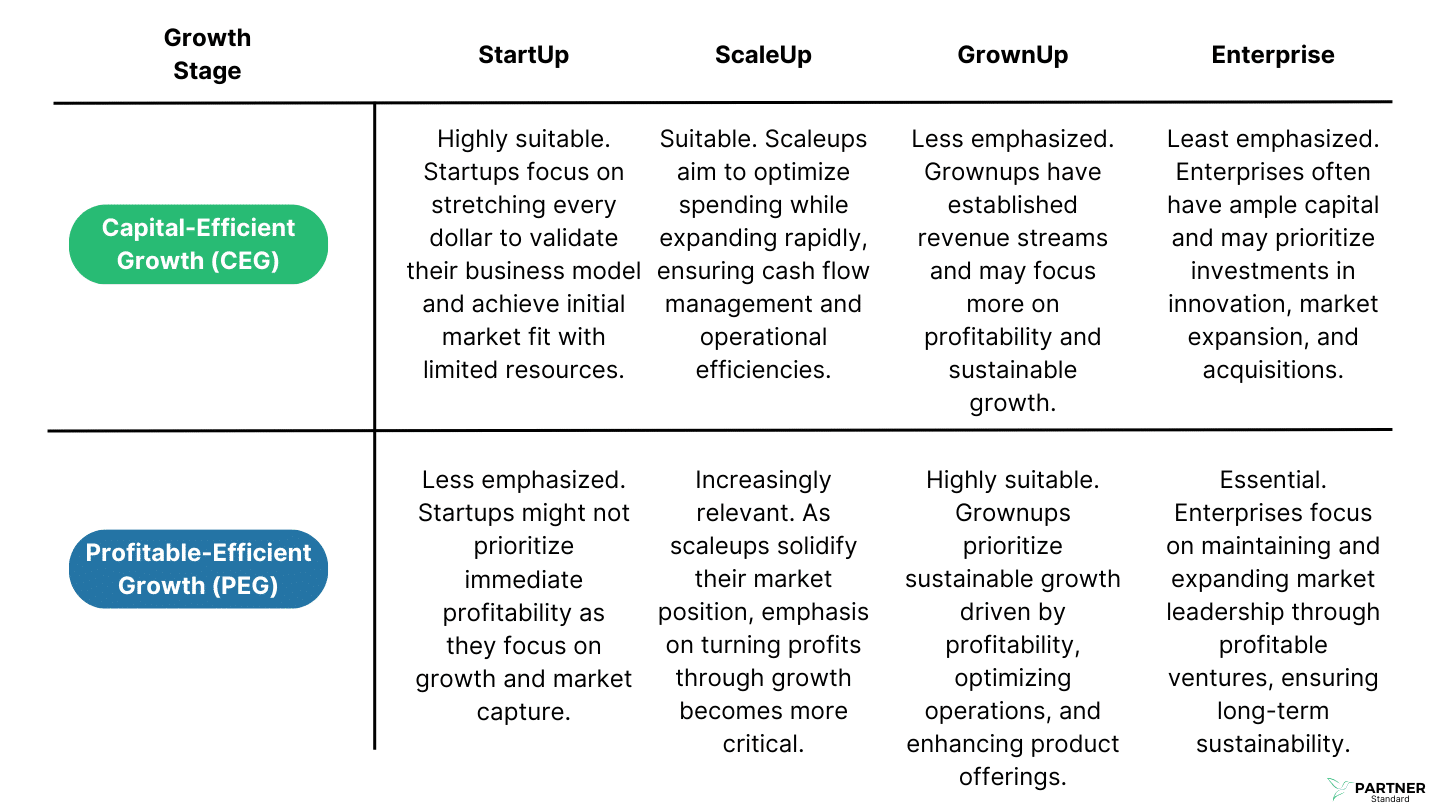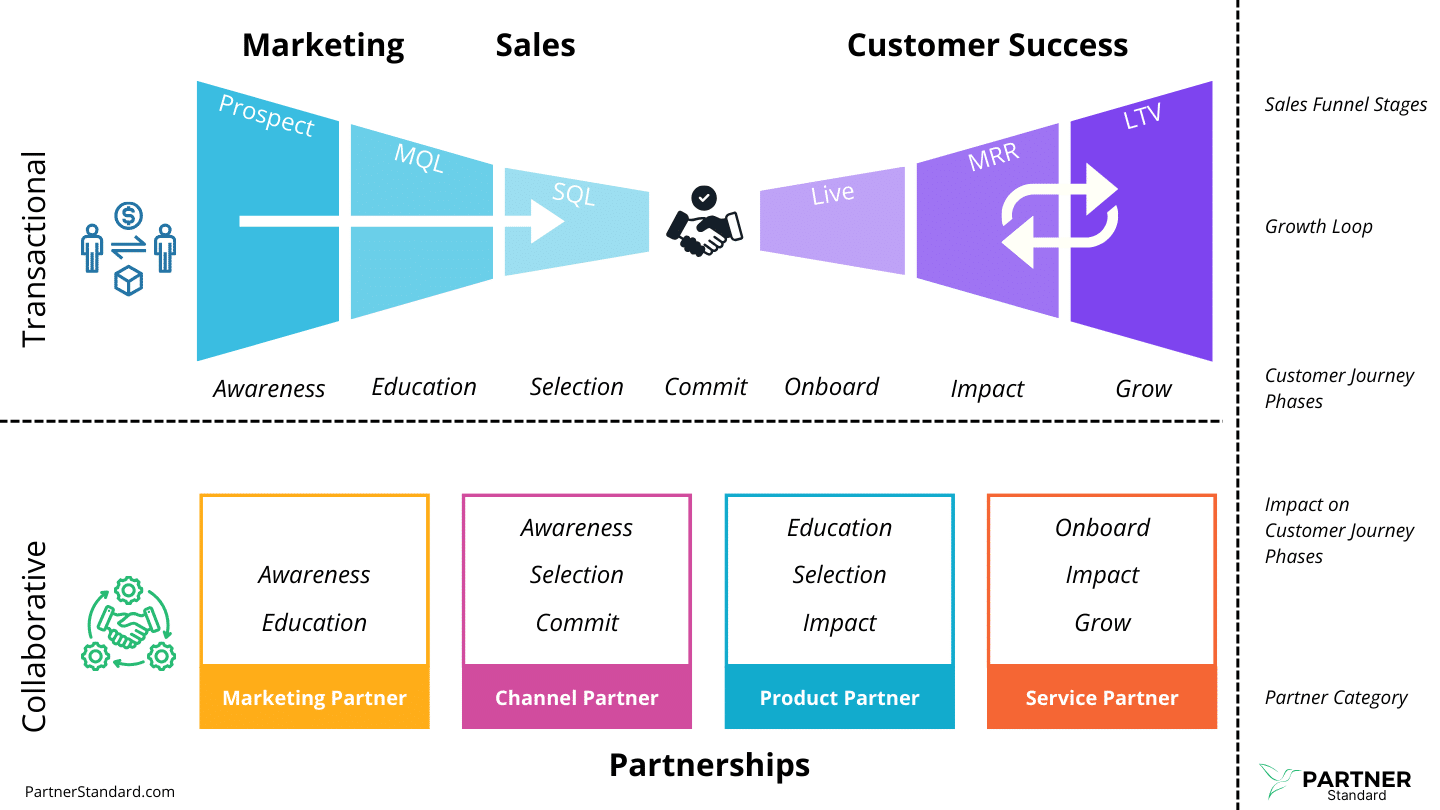The End of Growth At Any Cost (GAAC): Embracing Profitable and Capital-Efficient Growth Strategies
Growth at Any Cost is done! The era of prioritizing rapid expansion over profitability has come to an end. It is simply not working anymore. Instead, companies should consider looking at PEG and CEG to ensure sustained growth.
The End of GAAC
The GAAC model, which emphasizes rapid growth and market share capture at the expense of profitability, has been a popular strategy for many startups and tech companies. However, the changing economic environment, including rising interest rates and increased scrutiny from investors, has made this approach less viable. Companies now realize that sustainable growth requires a more balanced approach, prioritizing efficiency and sustainable growth.
The new kids on the block are PEG and CEG. You may have heard about them or may ask yourself
- Who are they?
- What is the difference between both of them?
- Which one will work best for my business?
PEG stands for Profitable Efficient Growth and refers to a company’s ability to maintain or improve profitability while growing its customer base and revenue. The goal is to balance growth and profitability to create a sustainable, cash-flow-positive business.
CEG stands for Capital Efficient Growth, and it focuses on achieving significant growth while minimizing the amount of outside capital required. Capital-efficient SaaS companies have a low cost of acquiring customers (CAC) compared to the lifetime value (LTV) of those customers.
Choosing the Right Approach
Whether you pick PEG or CEG depends on various factors, including the stage of your business, industry dynamics, and access to capital. Where are you standing today in your growth journey?
Start-ups and Scale-Ups generally benefit from a CEG approach, as it allows them to validate their business model and achieve key milestones without relying heavily on external funding. More established companies with proven business models may opt for PEG to scale their operations while maintaining profitability.
Capital Efficient Growth in SaaS
For early to mid-stage SaaS companies, particularly those in the process of capturing market share and refining their product offerings, capital-efficient growth is the way to go. This is because:
- Early-stage Funding: SaaS startups frequently rely on venture capital or angel investors for growth. Demonstrating capital efficiency can make a company more attractive to these investors by demonstrating that it can achieve significant growth milestones without excessive spending.
- Long-term Sustainability: Focusing on capital efficiency helps ensure that the company does not overextend its financial resources before achieving a stable revenue stream.
- Market Adaptability: Capital efficiency allows SaaS companies to remain agile, adapting their strategies based on market feedback without the burden of heavy financial commitments.
Profitable Efficient Growth in SaaS
As SaaS companies mature and their recurring revenue streams become more predictable and stable, the emphasis often shifts towards profitable growth. This is crucial for several reasons:
- Sustainability and Independence: Profitability is a key indicator of a company’s long-term viability. Achieving profitable growth can reduce dependence on external funding and provide more control over the company’s direction.
- Market Valuation: For mature SaaS companies, especially those considering an IPO or acquisition, profitability is a key metric that potential investors and buyers evaluate.
- Customer Lifetime Value (CLV): SaaS companies focusing on profitable growth tend to invest in retaining high-value customers, increasing CLV and overall company profitability.
How to move on from here?
Finding the right partners could be the best growth strategy for your business right now.
Working with partners can be crucial in achieving your growth objectives, regardless of your chosen approach. Partnerships can provide access to new markets, technologies, and expertise, helping you optimize your operations and achieve your growth targets more efficiently.
Partnerships is not an isolated department or sub-department of sales. It’s a part of your business that drives an entire Go-to-Market strategy and interacts with many departments beyond your revenue organization.
However, like the Product department and well-written code, correctly executed partnerships significantly impact your Bowtie funnel & stages.
🔗 Different partner categories impact different stages. Overview of Partner Categories & Partner Types by PartnerStandard.
💡 If you want to gain profound knowledge about Revenue Architecture and the Bowtie funnel, I recommend looking at the course Revenue Architecture by WbD.
Work with different Partners to achieve your growth goals.
Marketing Partners
- Awareness: Leverage marketing partners’ networks and channels to increase your brand visibility and reach new potential clients
- Education: Collaborate with marketing partners to create educational content, webinars, and events that help prospects understand the value of your solutions
Channel Partners
- Awareness: Utilize channel partners’ existing customer base and industry expertise to expand your market reach and generate new leads
- Selection: Equip channel partners with the necessary information and resources to effectively position your offerings and help prospects make informed decisions
- Commit: Leverage channel partners’ relationships and influence to drive prospects towards committing to your solutions
Product Partners
- Education: Showcase complementary products and integrations to demonstrate the expanded capabilities and value proposition of your solutions
- Selection: Collaborate with product partners to create compelling joint offerings that differentiate your solutions and make them more attractive to potential clients
- Impact: Work with product partners to develop case studies and success stories that highlight the impact of your combined solutions on client outcomes
Service Partners
- Onboard: Partner with service providers to offer comprehensive onboarding and implementation services, ensuring a smooth transition for new clients
- Impact: Collaborate with service partners to deliver exceptional support, training, and success services that help clients achieve their desired outcomes and realize the full value of your solutions
- Grow: Leverage service partners’ deep client relationships to identify expansion opportunities, drive adoption of additional products/services, and support account growth
By strategically implementing different types of partnerships across the bowtie funnel stages, you can enhance the client experience and drive better results.
Partnerships can help you
- Expand your reach and attract more potential clients
- Educate prospects and demonstrate the value of your solutions
- Differentiate your offerings and make them more compelling
- Streamline onboarding and ensure successful implementation
- Deliver ongoing support and success services to maximize client impact
- Identify growth opportunities and drive long-term client success
Conclusion
The era of Growth at Any Cost (GAAC) is over. Instead, companies should focus on Profitable Efficient Growth (PEG) or Capital Efficient Growth (CEG), depending on their stage and goals.
A well-executed partnership strategy that integrates different partner types across the bowtie funnel stages will help you achieve profitable and capital-efficient growth by expanding your reach, enhancing the customer experience, and driving better results at every stage you need.
Embrace PEG and CEG, and build a strong partner ecosystem to achieve sustainable growth in today’s competitive landscape.



